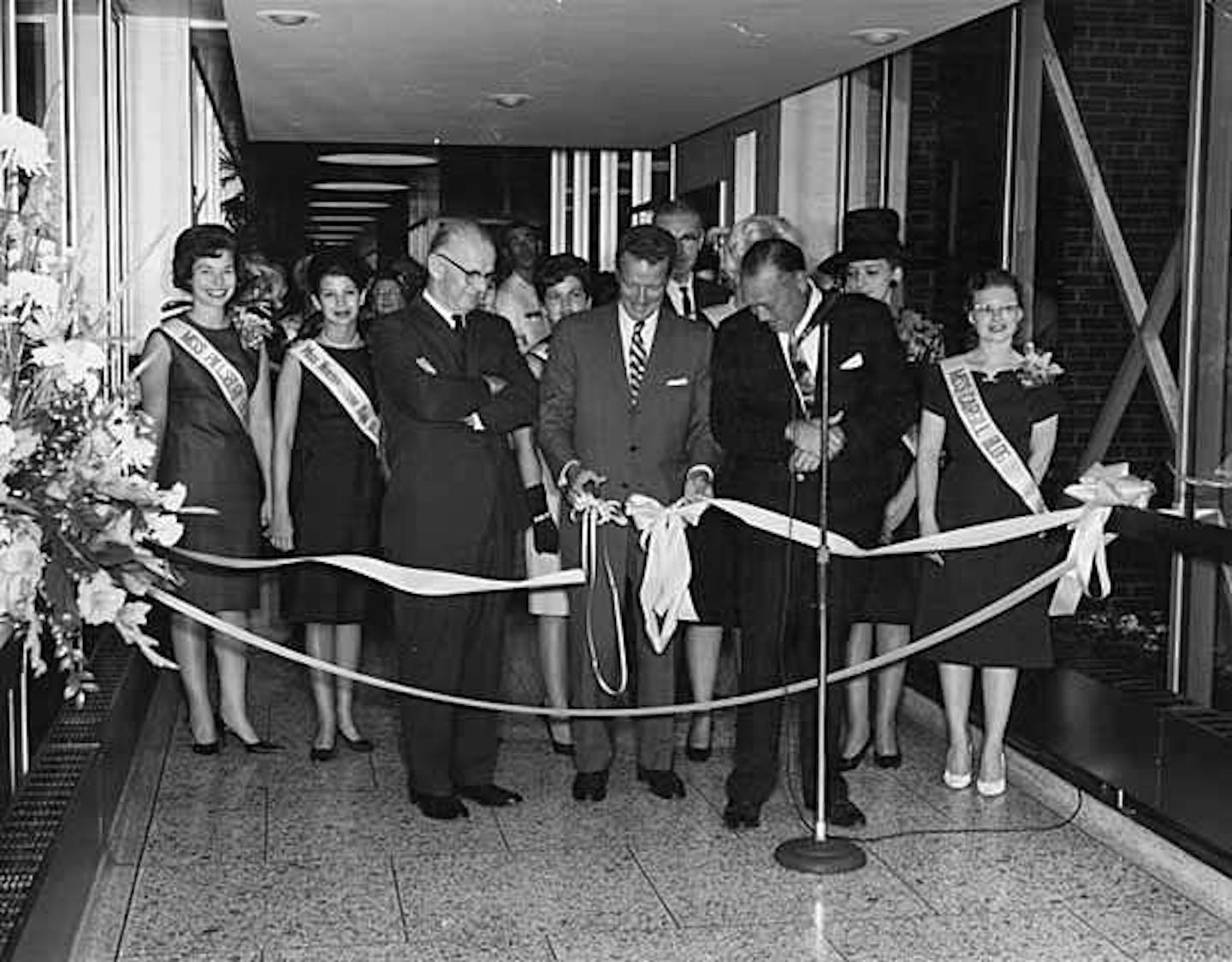At the time it was built, the Northstar Center was the biggest, most innovative and luxurious building ever conceived for the Mill City.
It was the future. It embodied the hope of urban vitality. And it was really dull to look at.
Not that anyone said so at the time. That was in the early 1960s, when the prevailing wisdom called for a two-step approach to check a city's decline.
Step 1: Raze all the old buildings in the skid row district.
Step 2: Build new charmless inward-looking blocks.
In the case of Minneapolis, that new charmless block was the Northstar Center, at 7th Street and Marquette Avenue.
We barely notice it today. It's brownish-beige, boring from the street, 18 floors, with no windows for the first eight floors, just a mesh to conceal the parking ramp. In its day, however, this now-modest building not only pointed to the city's future, but willed it into existence.
Northstar Center was a rather restrained creation — devoid of ornamentation, somewhat monotonous except for a mast that bore the building's space-age logo.
Its virtues resided inside, where it held a "City Within a City," according to a 1963 advertising supplement in the Minneapolis Tribune. "Minneapolis Has Today," read the cover of the supplement, "What Other Cities Will Have Someday."
The building was described as being a vote of confidence, so to speak, in the future of downtown. It offered indoor shopping, up-to-date lighting fixtures and a dining area with "air-conditioned comfort."
The most ingenious treat, the one thing that set the building apart from every other downtown building, was an indoor garden — complete with trees — on the eighth floor.
It also boasted what turned out to be the precursor to the skyway system.
Dubbed as one of the more "dramatic and practical features" of the Northstar was a "system of air-conditioned pedestrian 'skyways' and 'subways' that connect it with three other business blocks. It's not hard to imagine the day when entire downtown areas will be similarly 'under one roof.' Northstar Center is the pivot point of a giant step in that direction."
They were right. To be specific, architect Edward Baker was right. A skyway was his plan, his vision. And he intended for it to be the spur that would make the wisdom of the skyway system manifest to all.
Despite its early claims to fame, the Northstar Center spent less than a decade in the sun before it was eclipsed by bigger, grander buildings, including the IDS Center.
The IDS was the Northstar times 10, plus it had a vast open space with a glass ceiling that connected the inside to the outside. The Northstar, by contrast, was as locked down as a bowling alley. It settled into its second decade as just another building in the skyway system.
Over the years, big tenants came and went. The interior spaces were refreshed in the 1990s. It lost its midcentury style. It gained a car dealership. (Saturn cars were sold in the food court for a few years.) Eventually, there was nothing about the place to suggest it had ever been a novelty.
If you walk through the Northstar, you can find some remnants of the original '60s design. The skyway crossing 7th Street, one of the first skyways in the system, is still paved with oh-so-'60s terrazzo tile. In the basement, the original marble still hangs on the walls. There's also a tunnel (once called a "subway") that leads to the hotel across the street. Grab the original door handle, and pull.
It's locked.
Hopefully, it'll be open someday. Perhaps the stores will fill up again. And the building might find a long list of new tenants. For now, its fate is shared by many Minneapolis buildings from the 1960s that had their vogue, then became just another place.
The downside of being the building of the future? That future always has the last word.







